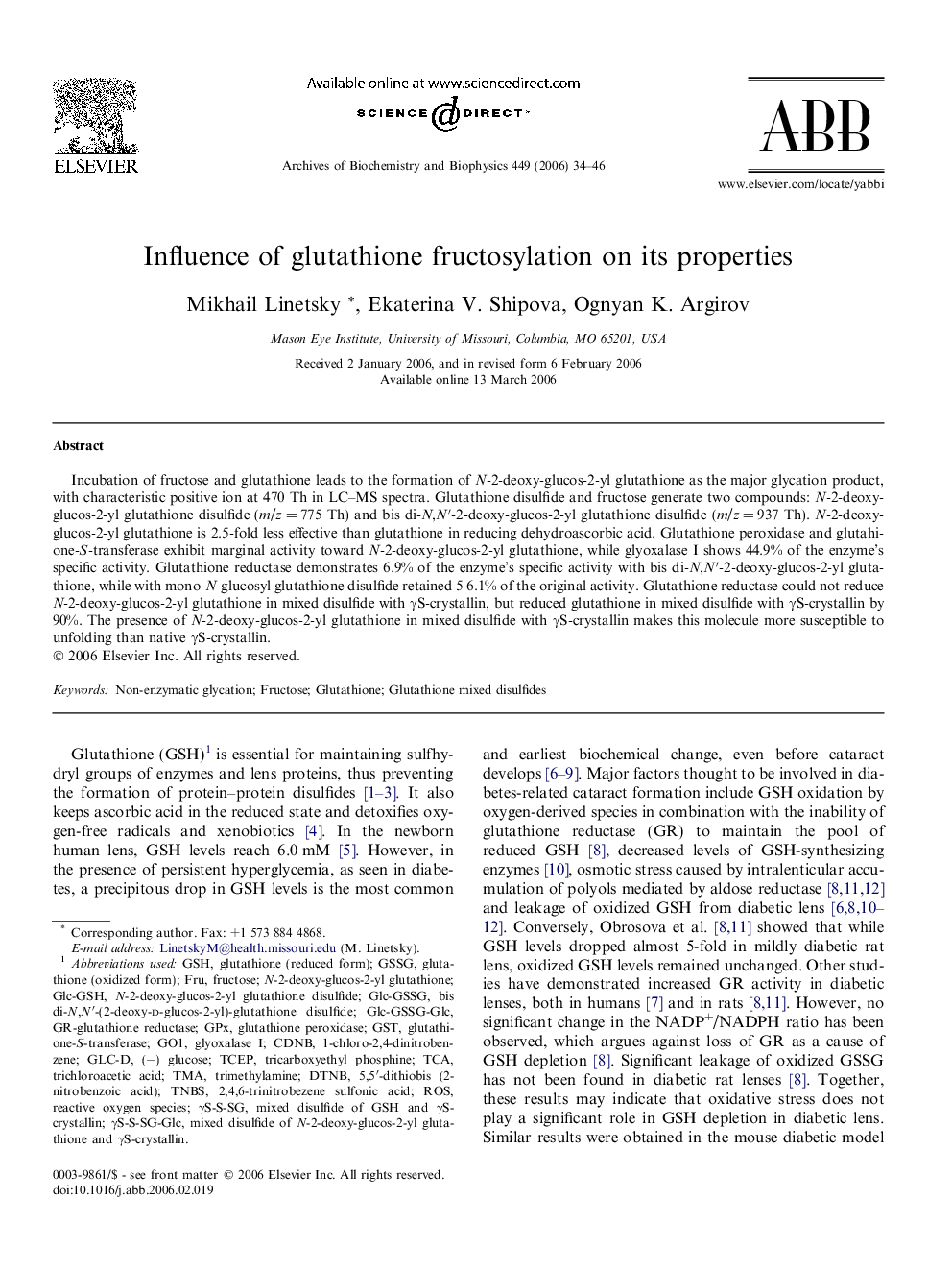| Article ID | Journal | Published Year | Pages | File Type |
|---|---|---|---|---|
| 1927531 | Archives of Biochemistry and Biophysics | 2006 | 13 Pages |
Abstract
Incubation of fructose and glutathione leads to the formation of N-2-deoxy-glucos-2-yl glutathione as the major glycation product, with characteristic positive ion at 470 Th in LC-MS spectra. Glutathione disulfide and fructose generate two compounds: N-2-deoxy-glucos-2-yl glutathione disulfide (m/z = 775 Th) and bis di-N,Nâ²-2-deoxy-glucos-2-yl glutathione disulfide (m/z = 937 Th). N-2-deoxy-glucos-2-yl glutathione is 2.5-fold less effective than glutathione in reducing dehydroascorbic acid. Glutathione peroxidase and glutahione-S-transferase exhibit marginal activity toward N-2-deoxy-glucos-2-yl glutathione, while glyoxalase I shows 44.9% of the enzyme's specific activity. Glutathione reductase demonstrates 6.9% of the enzyme's specific activity with bis di-N,Nâ²-2-deoxy-glucos-2-yl glutathione, while with mono-N-glucosyl glutathione disulfide retained 5 6.1% of the original activity. Glutathione reductase could not reduce N-2-deoxy-glucos-2-yl glutathione in mixed disulfide with γS-crystallin, but reduced glutathione in mixed disulfide with γS-crystallin by 90%. The presence of N-2-deoxy-glucos-2-yl glutathione in mixed disulfide with γS-crystallin makes this molecule more susceptible to unfolding than native γS-crystallin.
Related Topics
Life Sciences
Biochemistry, Genetics and Molecular Biology
Biochemistry
Authors
Mikhail Linetsky, Ekaterina V. Shipova, Ognyan K. Argirov,
